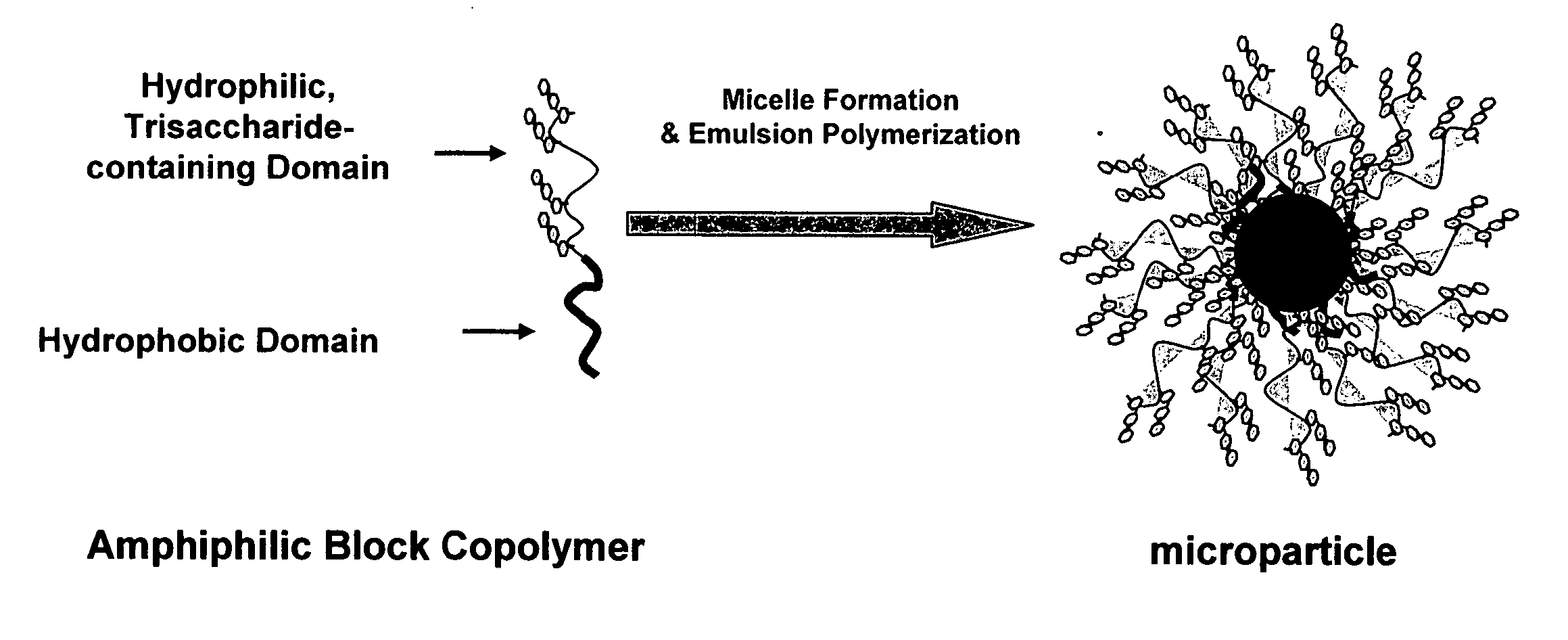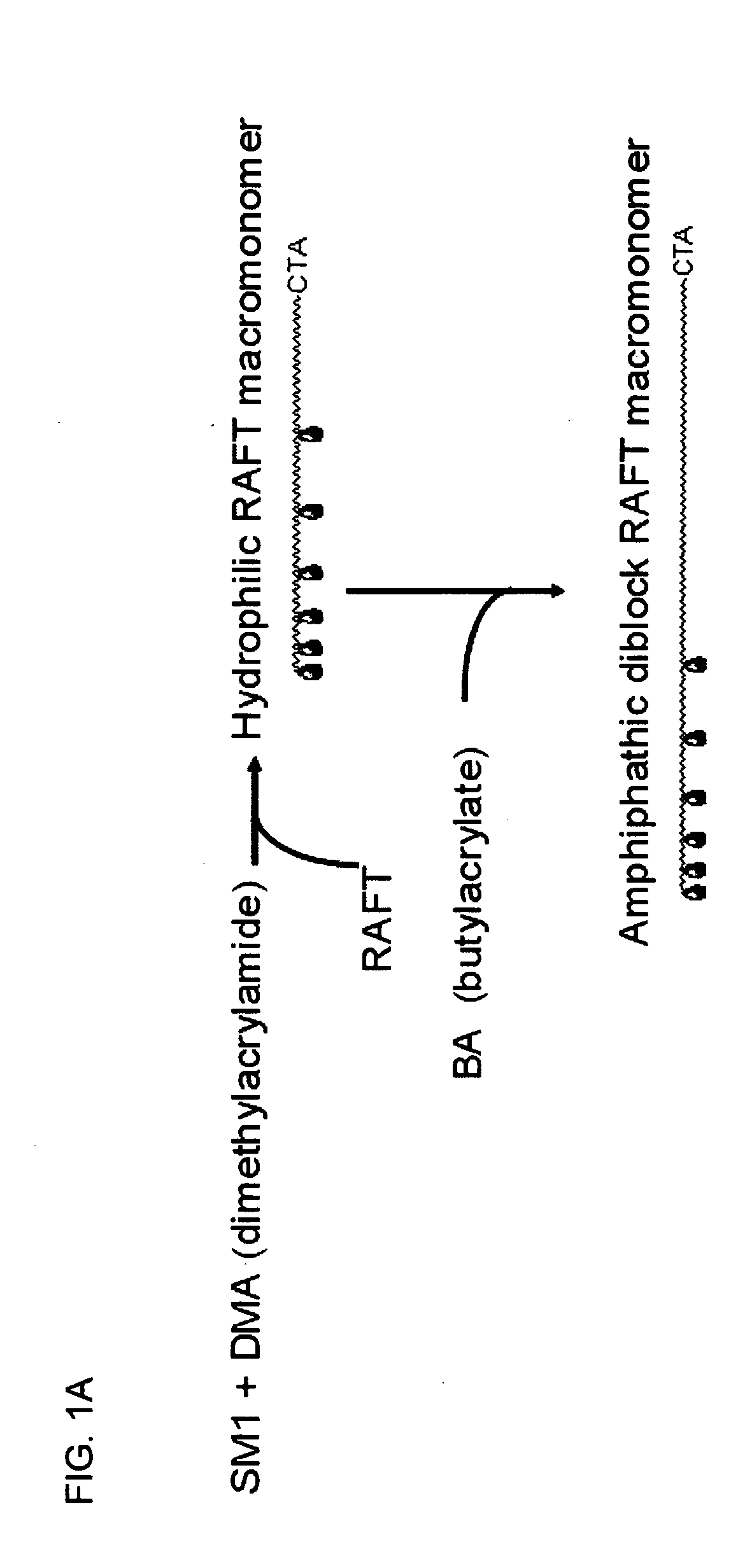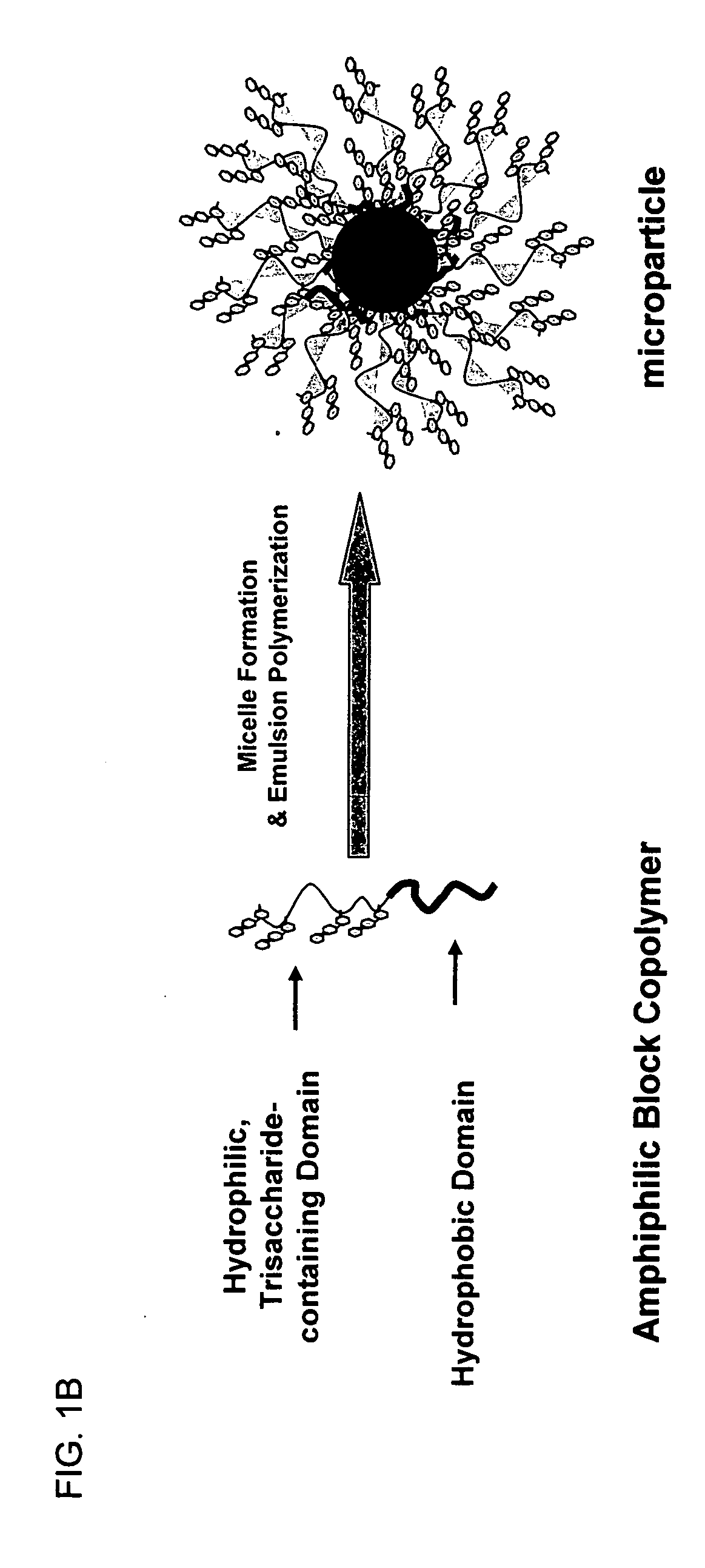Toxin binding compositions
a technology of compositions and toxic substances, applied in the direction of drug compositions, antibacterial agents, antinoxious agents, etc., can solve the problems of restricting the use of such approaches, cdad with antibiotics is associated with clinical relapse of disease, and antibiotic control is problemati
- Summary
- Abstract
- Description
- Claims
- Application Information
AI Technical Summary
Benefits of technology
Problems solved by technology
Method used
Image
Examples
example 1
Synthesis of Toxin Binding Compositions
[0088] SM1 precursor 1 was synthesized as previously reported. See WO 02 / 044190.
Synthesis of SM1:
[0089] To a solution of 25 mL ethylene diamine (370 mmol) and 30 mL of dimethylformamide, 10 gm of SM1 precursor 1 (14.8 mmol) was added and the reaction mixture was stirred at 85° C. for 18 hours. Progress of reaction was monitored by TLC (dichloromethane:methanol:water=6:4:0.15). Upon completion of reaction, the mixture was concentrated to 20 mL with rotary evaporator and the SM1 precursor 2 was obtained as white precipitate by pouring the concentrate into 1.5 L isopropanol. The filtered precipitate was dried under vacuum for 10 hours and used directly for subsequent acyloylation.
[0090] Crude SM1 precursor 2 was suspended in 80 mL MeOH / water mixture (1:1 by volume) and stirred in ice bath. 4.6 gm sodium carbonate (44 mmol) was added, which was followed by addition of 3.6 mL acryloyl chloride (44 mmol) with a dropping funnel over 10 minutes. ...
example 2
In-vitro (ELISA and Cell Culture) Assays
[0104] Two in vitro assays were used to measure the toxin binding and neutralization properties of the microparticles synthesized in Example 1. FIG. 2 depicts a summary of ELISA and tissue culture assays used to measure bioactivity of toxin molecules treated with micro-particles. In the toxin ELISA assay, the micro-particles (test concentrations ranging from 1-10 mg / mL) are incubated with toxin (concentration of 1 ng / mL to 160 μg / mL) at 37° C. with no shaking of the mixture. After an 18-hour incubation, the micro-particle / toxin mixture is centrifuged to remove pelleted material representing complexes of the micro-particles and bound toxin. The supernatant from this centrifugation step contains unbound toxin molecules, which are quantified by a standard ELISA assay consisting of PCG-4 monoclonal antibody to “capture” the unbound toxin molecules and a horse radish peroxidase-conjugated polyclonal antibody that is used to detect the immobilized ...
example 3
Binding Capacity of Microparticles (TM473B)
[0109] One of the microparticle samples of Example 1, TM473B, was made into 2× solutions at 20, 10, 5, and 2.5 mg / mL concentrations by diluting the microparticles in blocking buffer (1× Phosphate-buffered saline with 5% Fetal Bovine Serum). Purified C. diff Toxin A and B (TechLab T3001 and T3002) were diluted in blocking buffer to 2× solutions ranging from 360-2 μg / mL. In a checkerboard fashion, the dilutions were mixed into a final 1:1 ratio of microparticles to toxin.
[0110] To allow the microparticles to reach equilibrium binding, the samples were incubated at 37° C. for 18 hours. Bound Toxin A or B was pelletted with the microparticles by centrifuging at 10,000 rpm for 1 hour. Supernatant containing free / equilibrium toxin was collected and the concentration was determined by Toxin A or Toxin A and B ELISA Kits (TechLab C. Diff Tox-A Test T5001 or C. Diff Tox-A / BII Test T5015).
[0111] To determine the concentration of bound toxin, the e...
PUM
| Property | Measurement | Unit |
|---|---|---|
| particle radius | aaaaa | aaaaa |
| concentration | aaaaa | aaaaa |
| concentration | aaaaa | aaaaa |
Abstract
Description
Claims
Application Information
 Login to View More
Login to View More - R&D
- Intellectual Property
- Life Sciences
- Materials
- Tech Scout
- Unparalleled Data Quality
- Higher Quality Content
- 60% Fewer Hallucinations
Browse by: Latest US Patents, China's latest patents, Technical Efficacy Thesaurus, Application Domain, Technology Topic, Popular Technical Reports.
© 2025 PatSnap. All rights reserved.Legal|Privacy policy|Modern Slavery Act Transparency Statement|Sitemap|About US| Contact US: help@patsnap.com



